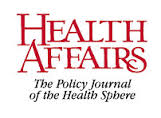Overdose Deaths Down in PA
Overdose deaths in Pennsylvania fell 18 percent from 2017 to 2018, according to a news release issued by Governor Wolf’s office.
 The decline results, according to the news release, from a combination of prevention, rescue, and treatment. These and efforts, including the distribution of free naloxone, a drug that helps rescue those who have overdosed on some drugs, have been funded in part by a grant from the U.S. Substance Abuse and Mental Health Services Administration and Pennsylvania’s own Substance Use Disorder Loan Repayment Program, which assists health care professionals who work in the behavioral health field with the cost of their education.
The decline results, according to the news release, from a combination of prevention, rescue, and treatment. These and efforts, including the distribution of free naloxone, a drug that helps rescue those who have overdosed on some drugs, have been funded in part by a grant from the U.S. Substance Abuse and Mental Health Services Administration and Pennsylvania’s own Substance Use Disorder Loan Repayment Program, which assists health care professionals who work in the behavioral health field with the cost of their education.
At the same time, however, overdose deaths in Pennsylvania from stimulants such as cocaine and methamphetamines continue to rise.
Learn more about the decline in overdose deaths in Pennsylvania and how it has come about from a news release from the governor’s office and the Johnstown Tribune-Democrat article “State OD deaths dropped 18 percent in 2018; stimulant deaths rose.”
 The report details individual hospital performance on these procedures, including in-hospital mortality, complications, and extended post-operative length of stay. In addition, it breaks down hospital performance for all of these measures and all of these procedures based on patient age, income, gender, geographic location, and race and ethnicity.
The report details individual hospital performance on these procedures, including in-hospital mortality, complications, and extended post-operative length of stay. In addition, it breaks down hospital performance for all of these measures and all of these procedures based on patient age, income, gender, geographic location, and race and ethnicity. According to a new study published in the journal Health Affairs, Medicaid and CHIP enrollment among low-income families employed full-time by large companies rose from 45 percent to 69 percent between 2008 and 2016. The driving force behind this growing reliance on public insurance appears to be the shift of health insurance costs from companies to employees: employee share of health insurance premiums rose 57 percent during that same period, leaving many families unable to afford even employer-subsidized health insurance.
According to a new study published in the journal Health Affairs, Medicaid and CHIP enrollment among low-income families employed full-time by large companies rose from 45 percent to 69 percent between 2008 and 2016. The driving force behind this growing reliance on public insurance appears to be the shift of health insurance costs from companies to employees: employee share of health insurance premiums rose 57 percent during that same period, leaving many families unable to afford even employer-subsidized health insurance. The resolution to conduct the study was approved unanimously by the state House, and according to a news release from state representative Jeanne McNeill, who sponsored the resolution,
The resolution to conduct the study was approved unanimously by the state House, and according to a news release from state representative Jeanne McNeill, who sponsored the resolution, The following is MACPAC’s own summary of the sessions.
The following is MACPAC’s own summary of the sessions. According to a Pennsylvania Department of Health news release,
According to a Pennsylvania Department of Health news release, Hospitals and health systems spent $99.7 million lobbying in Washington, D.C. last year, just barely more than in 2017 but much less than in 2009, when the focus of health care lobbying was the Affordable Care Act, then just a proposal and not a law.
Hospitals and health systems spent $99.7 million lobbying in Washington, D.C. last year, just barely more than in 2017 but much less than in 2009, when the focus of health care lobbying was the Affordable Care Act, then just a proposal and not a law. According to a presentation delivered at a MACPAC meeting last week:
According to a presentation delivered at a MACPAC meeting last week: